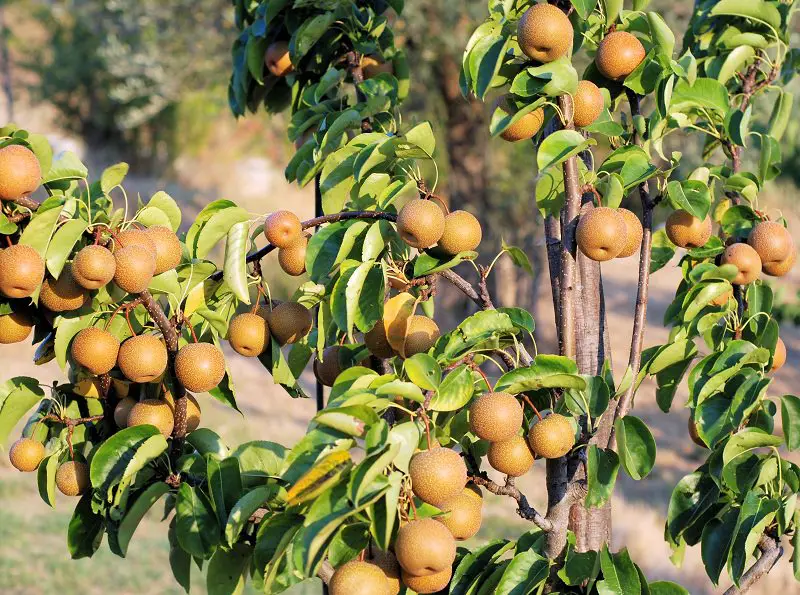Growing nashi pears (Asian Pears) involve a few steps you’d like to know. Read this article on how to grow Asian pears to find them out.
Nashi pear, which is also called as Asian pear is native to East Asia and also grown across Australia, Europe and America.

USDA Zones: 5 to 9
Difficulty: Easy to Moderate
Soil pH: 5.8 – 7
Other Names— Asian pear, Chinese pear, Korean pear, Japanese pear, Japanese Apple Pear, Taiwanese pear, apple pear, nashpati and sand pear.
Propagation
Nashi tree can be propagated from seeds, cutting and grafting. It’s best to buy a potted plant from nursery to get the fruits faster and stronger tree.
Planting
Dig a hole for planting Nashi pear tree with a shovel. The hole should be twice of plant’s root ball in depth and width. Remove plant from the nursery container without damaging its roots. Spread and loose the root ball and place the plant in the hole on the same level as it was in the container. Fill the hole with soil, tap around the surface gently and water thoroughly.
Position for Growing Nashi Pears
Choose open and sunniest spot of your garden to plant Asian pears, cluttered position that blocks the air flow of plant should be avoided. Nashi tree is self pollinating so you don’t need to plant two, three trees. It only grow up to 15 feet tall and doesn’t take lot of space.
Nashi pears can tolerate winter temperatures as low as – 40 degrees Fahrenheit, but it depends on the variety you’re growing.
Requirements for Growing Nashi Pears
Sun
Nashi pears grow in full sun, at least 6 hours of direct sun light is essential.
Soil
It grows best in the soil that is rich in micro nutrients and loamy. Soil for nashi tree should be well drained and moist with a pH level between 6 and 7.
Water
Water nashi pear tree immediately after planting so that the roots make good contact with the soil. Provide enough water to make sure the plant get at least an inch of water throughout the growing season. Nashi pears may require additional water if planted in sandy soil.
Fertilizer
Nashi pears don’t require much fertilizer. However, if tree is growing slowly, apply balanced 10 – 10 – 10 fertilizer in the beginning of growing season and in the middle of summer. The dose should be 1/3 to 1/2 cup of fertilizer for each year of age of the tree – up to 8 cups.
It’s also advisable to apply compost or farm manure in spring and summer.
Care
Its fruits are often eaten by birds and wasps, so you should protect the fruit with nets.
Pruning
Nashi pear tree grow more quickly than pear or apple trees and they must be regularly pruned. Do pruning to give it a desirable shape. Thin out dead, weak and unwanted branches or those that are blocking the air circulation.
Mulching
Do mulching to prevent weeds and conserve moisture in summer. Before the beginning of winter, mulch again with straws and grass clippings to insulate the plant.
Also Read: Use of grass clippings in the garden
Harvest
First fruits are expected in the second or third year after growing nashi pears tree. Harvesting should be done when fruit change its color to yellow or bronze green and exude inviting fruity odor.
Nashi pear fruit is crispier than apple and taste like pear or even better and refreshing. If you look at it much closer, you see that its fruit is sprinkled with tiny flecks, which are of caramel color. It’s good to properly cool the fruits before eating, then they taste great.


